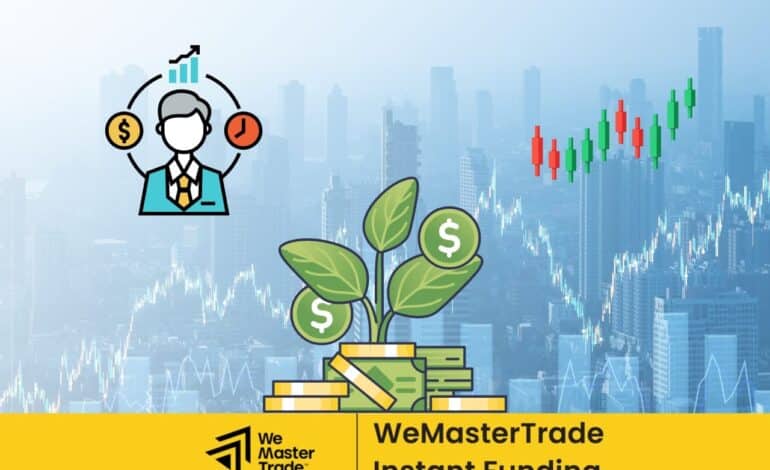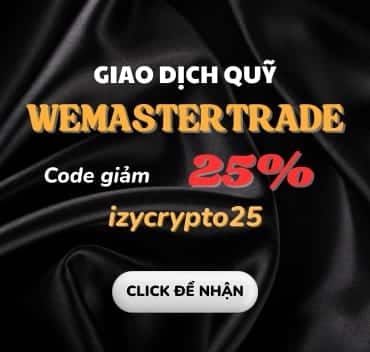What Are Real World Assets? Decoding the “HOT” Term in the Crypto Market
Real World Assets (RWA) refer to tangible or intangible assets that hold real-world value. Examples include familiar assets like real estate, vehicles, gold, diamonds, stocks, and debt—assets that can be easily valued and exchanged.
The integration of blockchain technology and decentralized finance (DeFi) has spurred a boom in RWA tokenization. But what is it about RWA that makes it so promising as a bridge between traditional finance and the cryptocurrency ecosystem?
Imagine, instead of owning a physical apartment, you could own a portion of that apartment represented by tokens on the blockchain. This is how RWA is transforming investment through DeFi.
3 Main Reasons Why Investors Are Flocking to RWA
- Attractive Profit Potential: RWA can generate returns through rental income, profit-sharing, or appreciation in value over time.
- Expanding Investment Markets: Blockchain enables global access to RWA, increasing liquidity in these markets.
- Transparency and Efficiency: Blockchain enhances transparency, security, and efficiency in RWA transactions compared to traditional methods.

How Does Real World Asset Tokenization (RWA Tokenization) Work?
The RWA tokenization process transforms real assets into digital assets on the blockchain, encompassing three primary steps:
Step 1: Asset Verification and Formalization (Off-chain Formalization)
- Ownership Proof: The first step is asset verification. Documentation such as property titles, vehicle registration papers, etc., is crucial for ownership proof.
- Asset Valuation: Independent experts assess the asset’s value based on various factors. For instance, a car’s value depends on its engine, mileage, etc.
- Legal Compliance: Ensuring that the asset complies with local legal frameworks is essential.
Step 2: Transferring Information to Blockchain (Information Bridging)
- Tokenization: Verified assets are tokenized as tokens or NFTs that represent their value or ownership rights.
- Management/Securitization: Blockchain and smart contracts ensure transparent and efficient management of RWA.
- Oracle Integration: Oracles act as bridges that update real-world information, such as RWA value, onto the blockchain.
Step 3: Integrating RWA with DeFi Protocols (On-chain Integration)
- Popular DeFi protocols supporting RWA include Aave, Compound, and MakerDAO, among others.
- Example: Users can use tokenized RWA as collateral to borrow stablecoins or other cryptocurrencies on DeFi platforms.

Benefits of Tokenizing Real World Assets
Tokenizing Real World Assets (RWA) offers substantial advantages for investors, opening access to promising new markets.
- Enhanced Liquidity: Tokenized RWA can be divided into smaller units, enabling investors to buy, sell, and trade large volumes more quickly and conveniently than traditional assets.
- Transparency and Security: All RWA transactions on the blockchain are publicly recorded, transparent, and protected by strong encryption, ensuring asset security.
- Easy Access to Capital: Tokenized RWA can be used as collateral for loans on DeFi with competitive interest rates and simplified, fast procedures compared to traditional borrowing methods.
Reduced Intermediary Costs: RWA transactions on the blockchain eliminate intermediaries like banks and notaries, reducing both costs and processing time.
Challenges in Real World Asset Tokenization: Risks to Consider Before Investing
Despite its promising advantages, the Real World Asset Tokenization market presents some inherent risks that investors should be aware of.
- Regulatory Barriers: The legal framework for RWA tokenization remains undefined in many countries, potentially creating legal risks for investors.
- Identity Verification: Verifying that users are the legitimate owners of assets is a significant challenge, requiring robust and secure identity verification solutions.
- Proof of Reserve: A transparent mechanism is essential to verify the collateral for tokenized RWAs, ensuring that the value of the tokens is consistently backed.
- Geographical Limitations: Some RWAs, such as real estate, are bound by location, which complicates trading and management.
Applications of Real World Assets in DeFi: Riding the Investment Trend
The integration of RWAs and DeFi has introduced numerous potential applications, capturing significant interest from investors.
- Collateralization and Lending: Trusted DeFi platforms like MakerDAO and Aave allow users to collateralize RWAs for borrowing.
- Fund Indices: Investors can participate in the RWA market via pooled investment funds, which distribute risk across different RWA tokens. This approach offers access to a diversified portfolio with minimal capital.
- Asset Management: Automated robo-advisor protocols can be employed to trade RWA tokens, optimizing returns and reducing risks for investors.

Top Real World Asset Projects: Analysis and Insights
The Real World Asset market is witnessing the rise of several promising projects. Here are some noteworthy RWA projects:
Lending/Borrowing
- MakerDAO: Enables users to collateralize RWAs (real estate) to borrow DAI. Strengths include its pioneering status and a large community. Weaknesses include limited collateral options.
- Goldfinch: Provides unsecured loans to financial institutions. Advantages include an effective operating model, though it relies heavily on local partners.
- Centrifuge: Tokenizes RWAs and creates NFTs, enabling businesses to access DeFi loans. Strengths include advanced technology, with limitations in brand visibility.
Other Projects
- Cougar DAO: A DAO model managing real-world assets like farms. Advantages include community-based management and transparency, but the project remains small in scale.
- Maple Finance: Provides subprime loans for institutions and investment funds. Benefits from reputable vetting processes, though it carries higher risk than traditional loans.
- RealIT: Tokenizes real estate and shares profits with token holders. Provides easier access to real estate markets, with liquidity dependent on the specific project.
Conclusion on Real World Assets
Real World Assets (RWAs) and their tokenization process are bridging the gap between tangible assets and decentralized finance, opening up new and promising investment opportunities. From real estate and precious metals to stocks, traditional assets can now be converted into tokens on the blockchain, allowing for greater accessibility, enhanced liquidity, and reduced transaction costs. Through blockchain and DeFi technology, RWAs offer investors optimized returns while ensuring transparency, security, and efficiency.
While some risks remain, such as regulatory and verification challenges, RWA tokenization is considered a significant step toward realizing the vision of bringing traditional assets onto the blockchain. With the development of projects like MakerDAO, Goldfinch, and Centrifuge, the RWA sector is set to drive further innovation in DeFi, providing real value to both crypto investors and the traditional financial market.
Learn more: SocialFi – A Future Trend with Great Potential in Blockchain Social Media
Join the izyCrypto community: Telegram Channel



